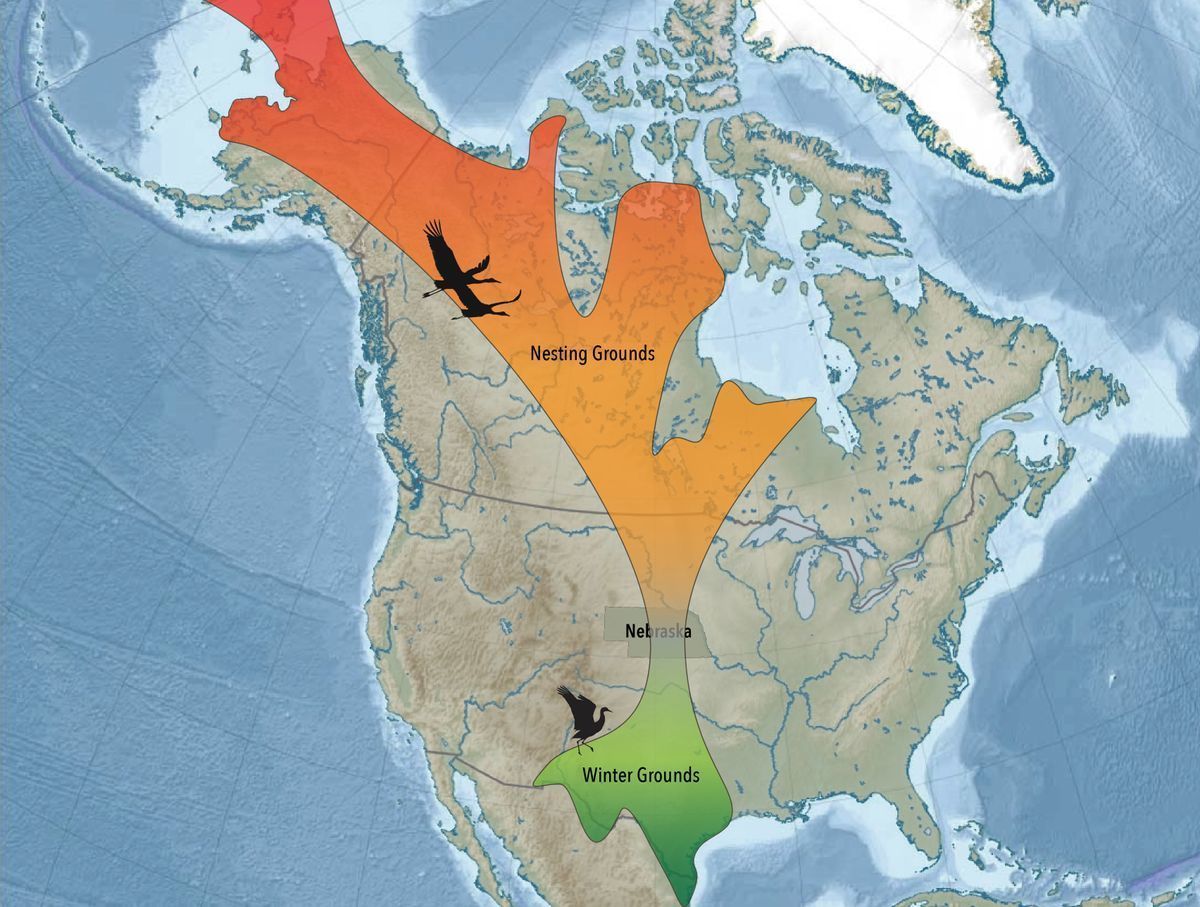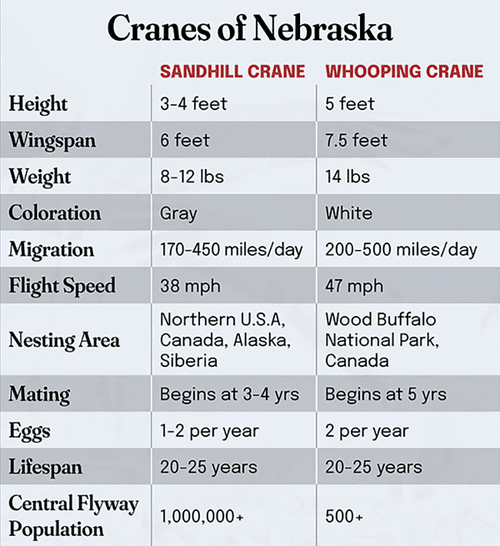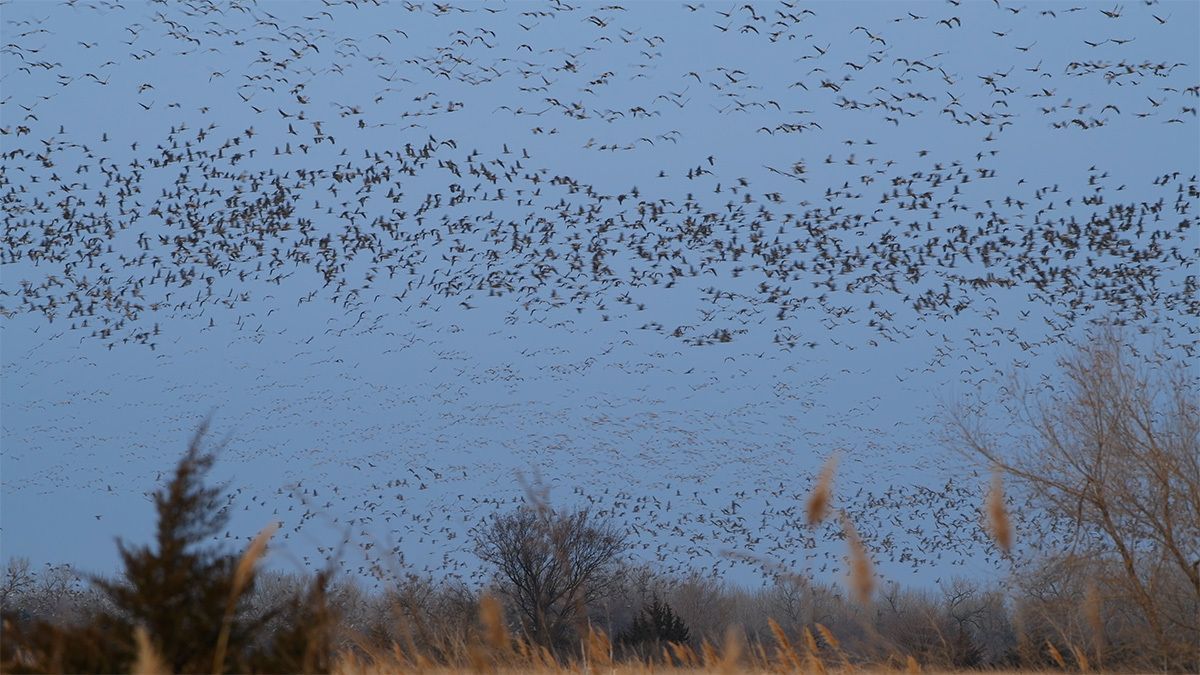Spring Migration of the Sandhill Cranes
Each spring, something magical happens in the heart of the Great Plains. 1,000,000 sandhill cranes, more than 80 percent of the world’s population, converge on Nebraska’s Platte River valley—a critical sliver of threatened habitat in North America’s Central Flyway. Along with them come millions of migrating ducks and geese in the neighboring rainwater basins.
The cranes come to rest and refuel – beginning in late February through early April – as they prepare for the arduous journey to vast breeding grounds in Canada, Alaska and Siberia. They arrive from far-flung wintering grounds in northern Mexico, Texas and New Mexico on an epic journey of thousands of miles.

This map outlines the northward migration of sandhill cranes through Nebraska and the Great Plains from southern wintering grounds to northern breeding grounds in the Central Flyway. The red lines represent individual birds that have been tracked with satellite telemetry throughout their migration after being affixed with transmitters on the Platte.
The shallow, braided channels of Nebraska’s Platte River provide safe nighttime roost sites. Nearby farm fields and wet meadows provide food needed to continue their migration. During their stop in Nebraska, Sandhill Cranes gain approximately 15% of their body weight.

There is no question: The arrival of the cranes on the Platte River—and the millions of other migratory birds that visit each spring—is one of the greatest wildlife spectacles on the continent.











